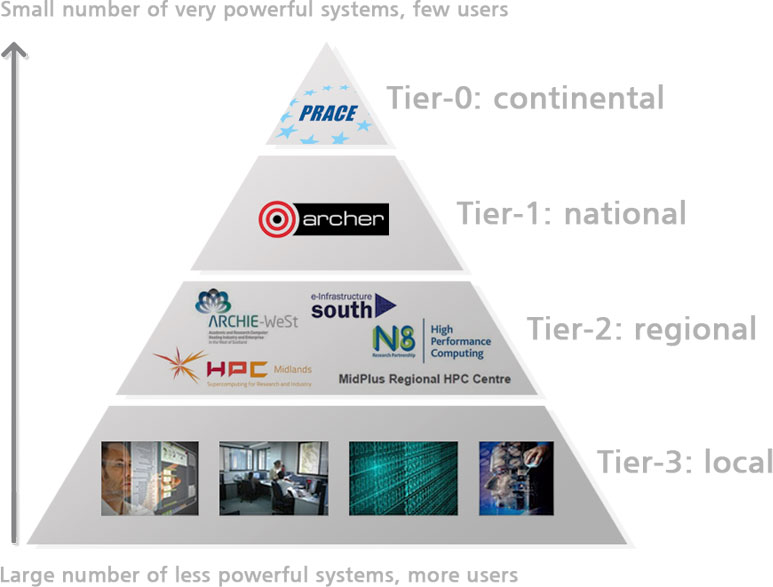e-Infrastructure

Isca is the University's HPC environment. It represents a £3m investment by the University, designed to serve the advanced computing requirements of all research disciplines.
The first of its kind in a UK University, Isca combines a traditional HPC cluster with a virtualised cluster environment, providing a range of node types in a single machine.
Isca is available free of charge to all research groups on all campuses. All research active staff are able to access Isca, from any University of Exeter campus or via a VPN connection. Isca consists of a range of compute resources: the traditional cluster (128 GB nodes) is complimented by two large memory (3TB) nodes, Xeon Phi accelerator nodes and GPU (Tesla K80) compute nodes. The non-traditional element of Isca includes a cluster of higher memory nodes (256 GB), 3 TB nodes, and an Openstack environment for the management of virtualised resources.
To request access, please use the ISCA Access Form
The university is also part of the GW4 consortium that have partnered with Cray to deliver a Tier 2 developmental system known as Isambard. Isambard is designed to evaluate novel technologies such as GPU cards, Intel's Phi architecture and Arm processors.
ARCHER is the latest UK National Supercomputing Service. The ARCHER Service started in November 2013 and is expected to run for 5 years. ARCHER provides a capability resource to allow researchers to run simulations and calculations that require large numbers of processing cores working in a tightly-coupled, parallel fashion.
DiRAC was established to provide distributed High Performance Computing (HPC) services to the STFC theory community. HPC-based modelling is an essential tool for the exploitation and interpretation of observational and experimental data generated by astronomy and particle physics facilities support by STFC as this technology allows scientists to test their theories and run simulations from the data gathered in experiments.
